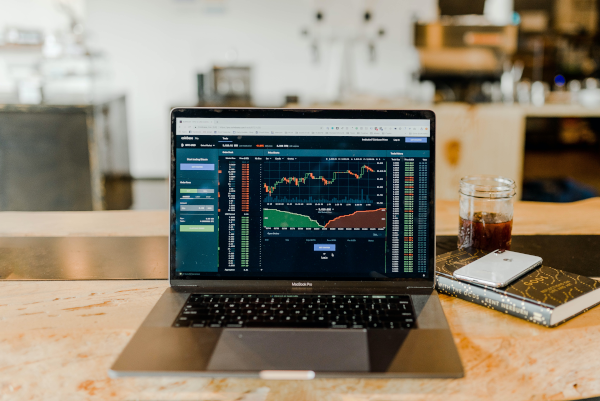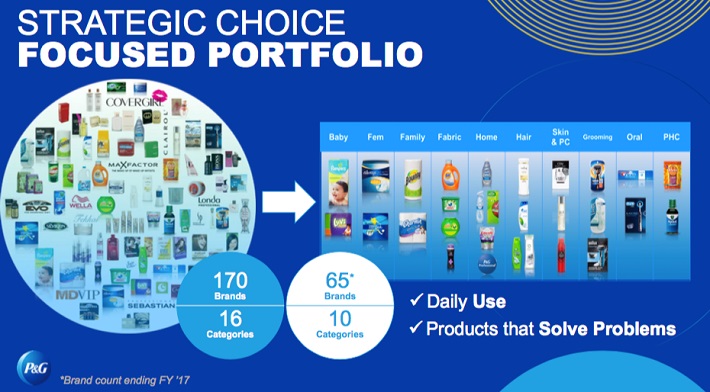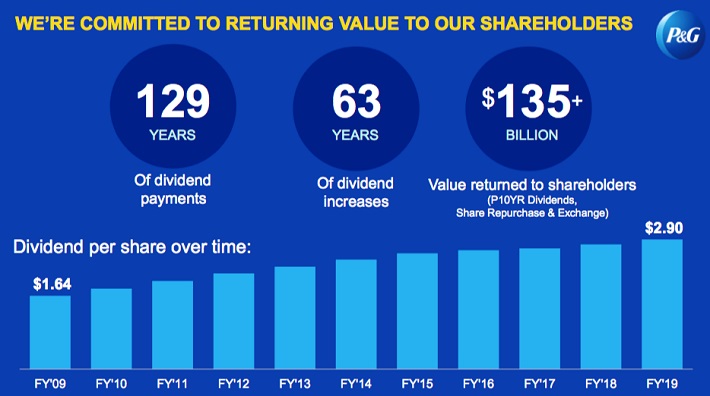Updated on December 11th, 2019 by Eli Inkrot
The Dividend Aristocrats are widely known as the best dividend growth stocks to buy and hold for the long term. These companies have generated strong profits year after year, even during recessions, and have proven the ability to grow their earnings steadily over many years.
The Dividend Aristocrats are a group of companies in the S&P 500 Index, with 25+ consecutive years of dividend increases. Of the 505 stocks that comprise the S&P 500 Index, just 57 currently qualify as Dividend Aristocrats.
You can download an Excel spreadsheet with the full list of Dividend Aristocrats by using the link below:
Once per year, we review each of the Dividend Aristocrats. Up next in the series is consumer products behemoth Procter & Gamble (PG). P&G has paid dividends for nearly 130 year, and has increased its dividend for an amazing 63 consecutive years.
Not only is the company a Dividend Aristocrat, it is a Dividend King as well. The Dividend Kings have increased their dividends for 50+ consecutive years. There are fewer than 30 Dividend Kings, including P&G. You can see all the Dividend Kings here.
Procter & Gamble is one of the most well-known dividend stocks, largely due to its extremely long dividend history and its widely recognizable brands. But the last few years have been characterized by uncertainty regarding the company’s future product portfolio.
However, things are looking up for the company. P&G recently completed a major overhaul of its product portfolio, including a significant divestment of brands no longer deemed necessary. It is now more focused and efficient, with renewed growth potential.
This article will discuss P&G’s recent portfolio transformation, future growth prospects, and stock valuation.
Business Overview
Procter & Gamble is a consumer products giant that sells its products in more than 180 countries and generates over $70 billion in annual sales. Some of its core brands include Gillette, Tide, Charmin, Crest, Pampers, Febreze, Head & Shoulders, Bounty, Oral-B, and many more. The company trades with a market capitalization of approximately $310 billion. This qualifies P&G as a mega-cap stock.
During P&G’s massive portfolio restructuring over the past few years, the company sold off dozens of its consumer brands. Asset sales include battery brand Duracell to Berkshire Hathaway (BRK-A) (BRK-B) for $4.7 billion, and a collection of 43 beauty brands to Coty (COTY) for $12.5 billion.
Today, P&G has slimmed down to just 65 brands, down from 170 previously.
Source: Annual Meeting Of Shareholders
The company operates in five reporting segments based on the following product categories:
- Fabric & Home Care (33% of sales)
- Baby, Feminine, & Family Care (27% of sales)
- Beauty (19% of sales)
- Health Care (12% of sales)
- Grooming (9% of sales)
The benefit of the restructuring is that P&G held on to its core consumer brands such as Tide, Charmin, Pampers, Gillette, and Crest, while shedding low-margin businesses with limited growth potential. The effect of the transformation is that P&G is now a nimbler, more flexible organization with renewed growth potential.
Growth Prospects
P&G’s slimmed down portfolio has made the company more efficient, with lower costs and higher margins. In addition, P&G received billions of dollars from its various asset sales, a large portion of which was used to buy back stock. These share repurchases have improved P&G’s earnings-per-share growth.
Procter & Gamble released first fiscal quarter results on October 22nd, 2019. Revenue came in at $17.8 billion, an increase of 7% despite negative impacts from foreign exchange rate volatility. Furthermore, organic revenue grew by 7%, thanks in large part to 10% growth in the Beauty segment and 9% growth in the Health Care segment. Meanwhile, core earnings-per-share increased 22% to $1.37 for the quarter.
Looking ahead, management projects full-year revenue growth of 3% to 5%, up from 3% to 4% previously. Core EPS growth forecasts were raised to 5% to 10% against the prior forecast of 4% to 9%.
Breaking down Procter & Gamble’s results by product segment, Beauty products led the way with 10% organic sales growth, followed by Health Care and Fabric & Home Care with 9% and 8% respective growth. The Baby, Feminine & Family Care and Grooming segments saw organic sales increase 5% and 1% respectively.
Margin expansion is a major component of P&G’s earnings growth strategy. P&G’s cost-cutting efforts have elevated its operating margins and after-tax profit margins toward the top of its peer group.
Source: Annual Meeting Of Shareholders
As part of the restructuring, P&G launched a massive cost-cutting effort. It cut costs by $10 billion over the course of its restructuring, through headcount reduction and lower SG&A expenses. Company management sees the potential for another $10 billion in additional cost savings by fiscal 2021.
Another growth catalyst for P&G is through expansion in under-developed economies. Emerging markets like China and India are fertile territory for large consumer products companies like P&G. These two countries have populations over 1 billion each, with rising middle classes. Approximately a third of P&G’s annual sales are derived from developing markets such as China, India, the Middle East and Africa, which are all attractive new growth markets.
P&G has also made acquisitions to accelerate its growth in new markets, such as the $4.2 billion acquisition of Germany-based pharmaceutical giant Merck’s global consumer health business. The acquisition included 10 core brands in vitamins, nutritional supplements, and other over-the-counter products.
According to Merck, the global OTC market is expected to grow 5% annually through 2025, which explains why P&G wants to invest more heavily in this area. Indeed, the Health Care segments results were helped by this business in the last quarter, with Personal Health Care rising 50% due to the acquisition.
Proctor & Gamble had a difficult time growing for the better part of the last decade, but the tide has been turning in the company’s favor. We are forecasting 5% annual growth from this point, taking into account the company’s repositioning toward growth
Competitive Advantages & Recession Performance
P&G has several competitive advantages. The first is its strong brand portfolio. P&G has several brands that generate $1 billion or more in annual sales. The 65 remaining core brands hold leadership positions in their respective categories. These products are associated with high quality, and consumers will pay a premium for them.
To retain its competitive position, the company invests heavily in advertising, which it can do thanks to its financial strength. Advertising expense totaled $6.75 billion in fiscal 2019. P&G also invests nearly $2 billion each year in research and development. This investment is a competitive advantage for P&G; R&D fuels product innovation, while advertising helps market new products and gain share.
P&G’s competitive advantages allow the company to remain profitable, even during periods of recession. Earnings held up very well during the Great Recession:
- 2007 earnings-per-share of $3.04
- 2008 earnings-per-share of $3.64 (19.7% increase)
- 2009 earnings-per-share of $3.58 (-1.6% decline)
- 2010 earnings-per-share of $3.53 (-1.4% decline)
As you can see, P&G had a very strong year in 2008, with nearly 20% earnings growth. Earnings dipped only mildly in the following two years.
This was a very strong performance, in one of the worst economic downturns in the past several decades. P&G has a recession-resistant business model. Everyone needs paper towels, toothpaste, razors, and other P&G products, regardless of the economic climate.
Valuation & Expected Returns
Based on expected earnings-per-share of $4.82 for fiscal 2020, along with a current stock price of $125, P&G is presently trading at a price-to-earnings ratio of 25.9.
Over the past decade, shares are traded with an average valuation of 19 to 20 times earnings. As such, shares appear to be more than fully valued. The improved growth prospects of the company appear to be priced in, and then some. If P&G’s valuation were to revert back to 20 times earnings, which is our estimate of fair value, future shareholder returns could face a 5.0% annual reduction over the next 5 years.
Earnings growth and dividends will help offset the impact of a contracting price-to-earnings multiple. For example, we expect P&G to generate 5% annual earnings growth through 2024, and the stock has a current dividend yield of 2.4%.
However, adding it all up leaves uninspiring total return potential in the low single-digits on an annualized basis. Total returns are expected at 2.4% per year, as the impact of a declining valuation multiple effectively offsets the company’s expected EPS growth. Granted, this estimate could be too conservative if shares were to continue trading at an elevated valuation, or if growth were to formulate at a quicker pace. Of course both of these items are far from certain.
The current dividend payout is well-covered by earnings, with room to grow. Based on expected fiscal 2020 earnings, P&G has a payout ratio of just over 60%. This leaves enough cushion for future dividend increases each year, in the low-to-mid single-digit range.
Source: Annual Meeting Of Shareholders
Investors should expect P&G to continue increasing its dividend each year, for many years to come. It has the brand strength, competitive advantages, and profitability to maintain its steady and annual dividend increases over the long-term.
Final Thoughts
P&G has many strong qualities that make it a time-tested dividend growth company. But legendary companies with long histories, such as P&G, may at times need to change direction. Thanks to a significant reshuffling of its brand portfolio, P&G once again is positioned to capitalize on global growth opportunities.
P&G has a long history of rewarding shareholders with dividends. P&G has been paying a dividend for nearly 130 years. It has also earned a place on both the Dividend Aristocrats and Dividend Kings lists. For its various accomplishments, P&G earns a place on our list of “blue chip” stocks. You can see the full list of blue chip stocks here.
However, the current valuation – now sitting near a decade high – leaves something to be desired from a value perspective. So much so, that the company’s earnings per share growth could be completely offset by a reduction in the valuation. While we are enthused about the turnaround of the core business, and the progress that has been made lately, we do not find shares to be compelling at this time.








